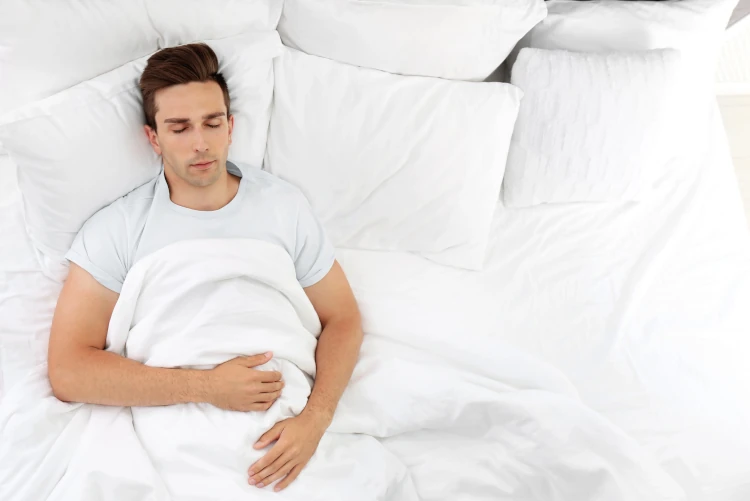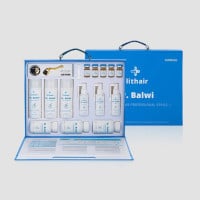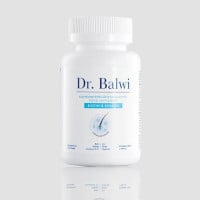
A Guide for Sleeping After a Hair Transplant
Proper post-operative care is a must after a hair transplant, and one of the most overlooked — but important — aspects is how you sleep. Newly transplanted grafts are delicate in the days following a procedure, and unnecessary pressure, friction, or poor hygiene can damage the grafts, slow healing, or even lead to infections. A few thoughtful changes in your sleep routine can make a big difference in terms of comfort and long-term operational success.
Our Tips for Sleeping Comfortably Following a Hair Transplant
Sleeping after a hair transplant can be challenging due to swelling, discomfort, and the need to avoid disturbing the grafted area. During the first seven to 10 days, newly transplanted follicles are not yet anchored in the scalp and can be dislodged by friction or direct pressure. Swelling may also shift downward if you lie flat, leading to facial puffiness. It’s important to adopt a sleep position and environment that reduces pressure on the scalp while keeping the recovering area cool and clean.
Positions
Sleeping on your back with your head elevated at a 30 to 45 degree angle is often recommended post-transplant. This position can be achieved comfortably using extra pillows or a recliner in the nights following your procedure. Sleeping on your back at this angle helps drain and reduce swelling that can accumulate in the face and prevents grafts from encountering harmful friction with bedding. A travel pillow can also help stabilize your head in this position.
Avoid lying flat on your back, stomach, or sides. These sleep positions can increase blood flow to the head and worsen swelling. They also raise the risk of dislodging hair follicles through unintentional movements or rubbing.
Bedding
Using clean, soft bedding made of breathable materials, like cotton or bamboo, can improve comfort and hygiene. Place a clean towel or disposable pillow cover over your pillow each night to prevent bacteria transfer. A memory foam pillow or wedge pillow can help you maintain proper elevation and head positioning. Consider using a satin or silk pillowcase to further reduce friction on your scalp.
Sleep Hygiene
Practicing good sleep hygiene after a hair transplant is essential for both recovery and overall well-being. Maintain a consistent sleep schedule by going to bed and waking up at the same times each day. Sleep in a clean, quiet, and cool environment without clutter or distractions. Avoid caffeine and heavy meals close to bedtime, as these can disrupt sleep quality. Limiting screen time before bed and engaging in relaxing activities like reading or deep breathing can also improve sleep quality.
How Good Sleep Can Promote Healthy Recovery

Sleep plays an instrumental role in healing by promoting cellular repair and reducing inflammation. Getting good rest allows your body to work on properly healing the transplant site while also allowing you to recharge and relax. Chronic sleep disruption may increase cortisol levels, which have been associated with telogen effluvium (temporary hair loss) and hindered healing. Studies confirm that quality sleep helps regulate immune response and tissue regeneration, both necessary for transplant recovery.
Risks of Improper Approach To Sleep
Failing to sleep properly after a hair transplant can disrupt grafts, delay healing, and introduce bacteria that lead to infection. Rubbing or applying pressure to the transplant area may cause scabbing, shock loss, or even permanent graft failure, impacting the aesthetic outcome and reducing the value of the procedure. In certain severe cases, a secondary procedure may be necessary. If complications arise, it’s essential to follow your surgeon’s advice and care instructions closely to minimize lasting damage and optimize recovery.
When To Talk to a Doctor
You should speak with your doctor if you’re experiencing persistent discomfort that interferes with your sleep, ongoing swelling beyond a few days, or signs of infection such as redness, heat, or discharge. Concerns about shock loss — when existing or native hair near the transplant site falls out — or sudden changes in the appearance of the transplant site should also prompt a follow-up. Your provider can assess your recovery and recommend additional care if needed.


